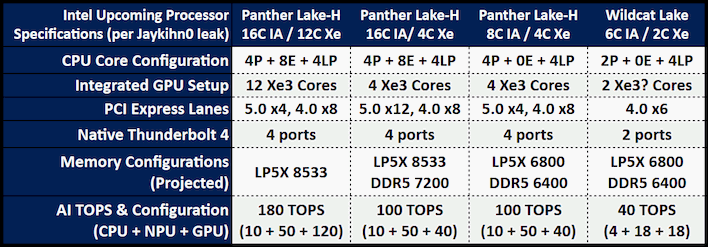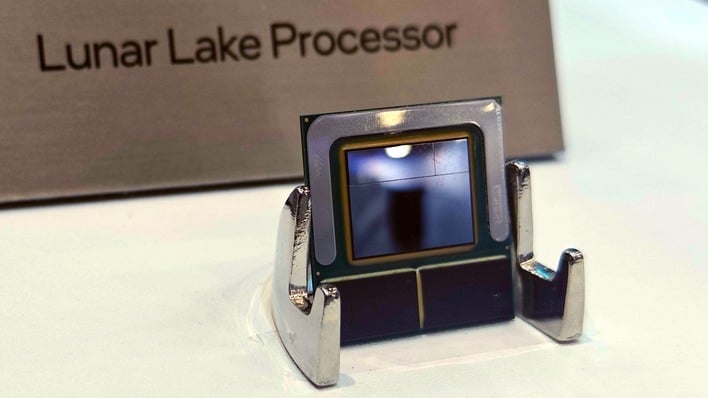Intel's Panther Lake And Wildcat Lake Specs May Have Leaked

Panther Lake appears to be a high-performance mobile CPU series aimed at laptops and possibly gaming handhelds, succeeding last year's Lunar Lake processors. It will purportedly be the first product on Intel's 18A process node and feature a mix of Cougar Cove P-cores and Darkmont E-cores. It also incorporates Intel's Xe3 "Celestial" graphics, with core counts varying between models, and could push AI acceleration further with up to 180 TOPS across CPU, NPU, and GPU.
Notably, all of the leaked Panther Lake models are indicated to be "-H" series CPUs, suggesting power targets between 28W and 45W. That's surprising in the case of the design with just 4 P-cores and 4 LP E-cores, like Lunar Lake, especially considering that Lunar Lake had eight Xe2 cores—although it's possible that Xe3 is once again wider than Xe2 (as Battlemage's Xe2 was wider than the original Xe architecture as seen in Alchemist.)
Lunar Lake, the predecessor to Panther Lake, was an experiment of sorts that used an advanced memory-on-package design to improve power efficiency, but that approach proved too costly for widespread adoption. With Panther Lake, Intel appears to be pivoting back to more traditional memory configurations, though the leaked specs still hint at high-end memory support, including LPDDR5X-8533 and DDR5-7200. The use of high-speed DDR5 in what should be SODIMMs is particularly interesting, possibly indicating the adoption of CSODIMM or even CAMM2 memory.
Wildcat Lake, by contrast, remains more mysterious. It's expected to be an ultra-low-power successor to Alder Lake-N, targeting devices like low-cost laptops or Chromebooks as well as embedded applications. The specs show a maximum of two P-cores and four LP-cores, possibly with Xe3 graphics, suggesting it could be a highly efficient but still capable processor for lightweight devices. Wildcat Lake is thought to be coming to market early next year.
The relatively modest P-core counts in Panther Lake (maxing out at four, according to Jaykihn's information) could indicate a shift in Intel's mobile strategy, prioritizing efficiency and AI performance over raw multicore scaling. As the test case for Intel's critical 18A process, Panther Lake could be one of the most important Intel launches in a decade. All eyes are on Intel's foundry to see if it can keep up with its rivals in Asia.




